



Videos from Bilibili: https://space.bilibili.com/581408327?spm_id_from=333.40164.0.0
Videos from YouTube: https://www.youtube.com/@yangli_ox_cal_wh
ResearchGate: https://www.researchgate.net/profile/Yang-Li-281
Google Scholar: https://www.scholar.google.com/citations?user=stANeZ0AAAAJ&hl=en
(Updated in Sep. 2025)
My research is about morphing structures and seeking to program the shape and nonlinear mechanical response during morphing. One problem I am working on is programmed morphing with easy actuation. One application direction that I am currently pushing is soft and MEMS electronics that involve large deformation, like tactile sensors or IMU, as I was transferred into an integrated circuits department from the previous mechanical engineering department due to the current Chinese national strategy.
My current goals:
(1) Fundamental research on new methods related to the inverse design of morphing structures.
(i) Topology-geometry optimization for nonlinear and large deformation structures.
(ii) The emergence of multi-stable and pseudo-mechanisms from overconstrained structures, and how to control such emergence inversely.
(iii) Explore the rich formation of multi-compatible (multi-stable) structures, like in origami and kirigami, and fulfill their "easy-to-actuate" properties in illustrative applications.
(2) Application-oriented research.
(i) Mechanical engineering
(a) Deployable-reconfigurable antennas, morphing wings and drones, multi-modal robots, energy-vibration-absorption components
(ii) Electronics
(a) Soft electronics, like tactile sensors
(b) MEMS electronics for sensitive acceleration detection by (reconfigurable) zero-stiffness.
(iii) Other commercial products from industrial collaboration
(a) Knee braces, tents, mats, shoes, and so on for the mechanical design and easier actuation/deployment.
(3) Publish in high-impact journals due to the evaluation standard of the current local system.
My PhD was about energy-absorbing thin-walled structures, which involve tubes, beams, and sandwich panels, pursuing high and flat force-displacement curves. Now my interest expands from high energy absorption to arbitrarily prescribable force-displacement curves and their applications (energy-vibration integrated absorption, MEMS).
1. Energy-absorbing thin-walled structures
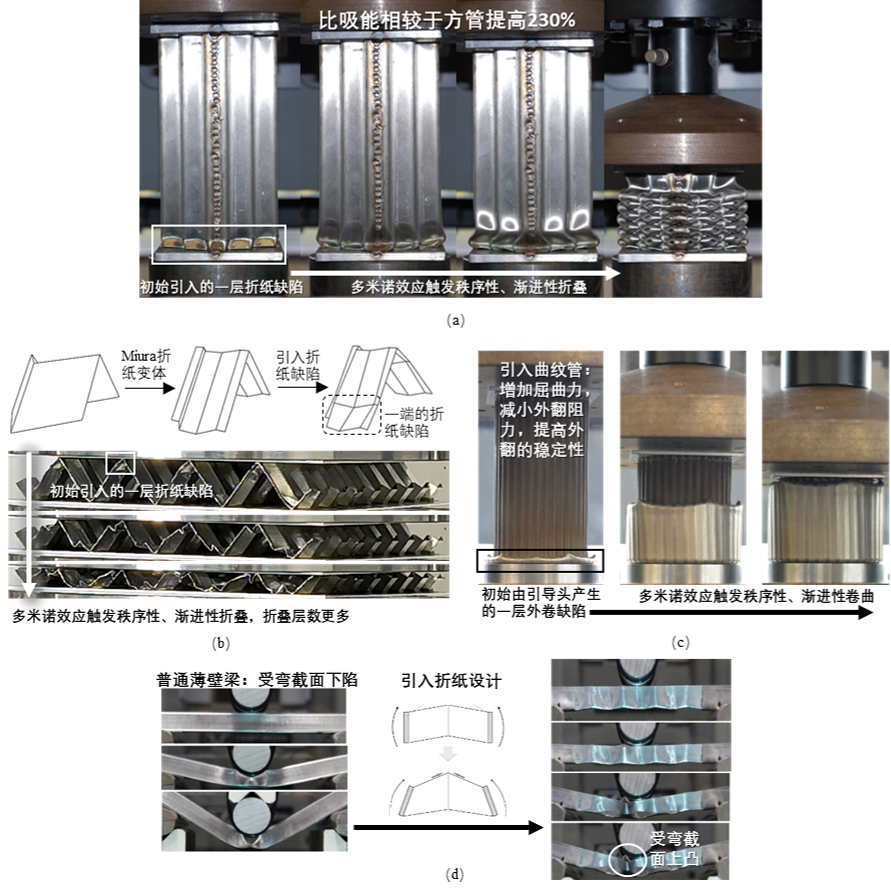
Reference papers:
Y. Li, Z. You*, External inversion of thin-walled corrugated tubes. International Journal of Mechanical Sciences (2018), https://doi.org/10.1016/j.ijmecsci.2018.05.044
Y. Li*, Z. You, Open-section origami beams for energy absorption, International Journal of Mechanical Sciences (2019), https://doi.org/10.1016/j.ijmecsci.2019.05.006
Y. Li*, Z. You, Origami concave tubes for energy absorption, International Journal of Solids and Structures (2019), https://doi.org/10.1016/j.ijsolstr.2019.03.026
J. Cheng, Y. Li*. Foldcore structures with origami initiators for energy-absorbing sandwich panels. Acta Mech. Solida Sin (2023), https://doi.org/10.1007/s10338-023-00396-x
2. Metastructures with arbitrarily prescribable force-displacement curves
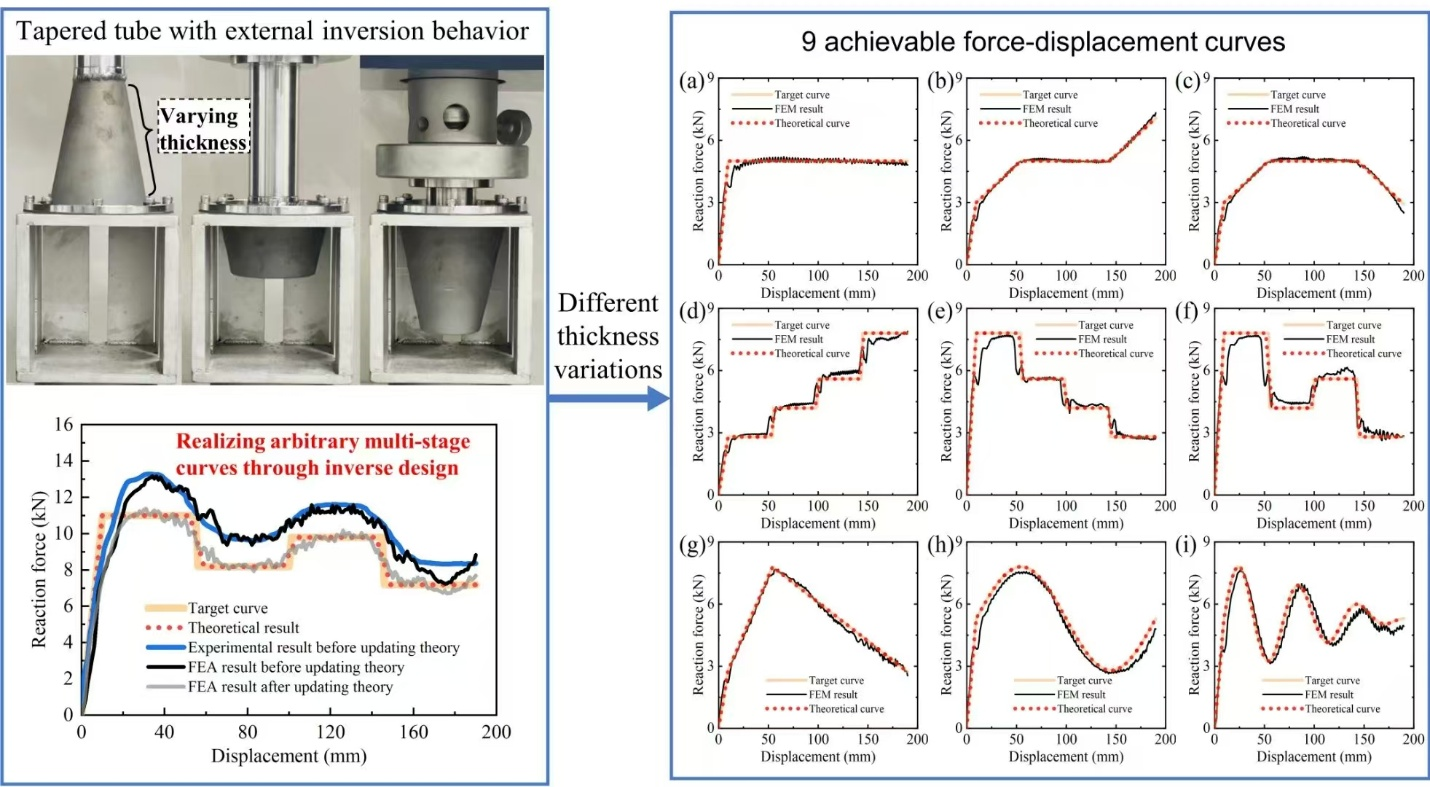
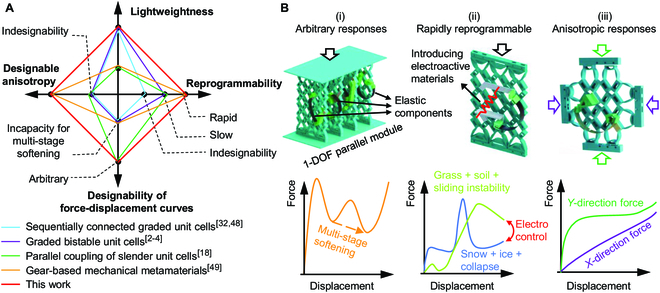
Reference papers:
Q. Chen#, K. Tan#, X. He, A. Chen, Y. Li*, Metastructures based on graded tube inversion for arbitrarily prescribable force-displacement relationships, Extreme Mechanics Letters (2024), https://doi.org/10.1016/j.eml.2024.102174
Hui Li, Wei Li, Huixin Yang, Joseph M. Gattas, Qingyang Chen, Yang Li*. One-DOF Mechanical Metamaterials with Arbitrary Prescribability and Rapid Reprogrammability of Force-Displacement Curves. Research. DOI:10.34133/research.0715
Hu, Xinyu, Kexin Tan, Yuhang Yang, Qingyang Chen, and Yang Li*. "A" peak-valley-control" strategy for customizing force-displacement relationships." Engineering Structures 344 (2025): 121389. https://doi.org/10.1016/j.engstruct.2025.121389
Multi-stable morphing structures
From my research experience in Pellegrino's group at Caltech, I realized "actuation complexity" is a big problem for morphing structures with prescribed multiple target shapes. Then, I discovered that multi-stability can reduce the requirement for the number and accuracy of actuators due to the attraction domain of the multi-stable energy landscape, resulting in lighter and more reliable systems. An illustrative video was made by my student Tong Zhou:
https://www.youtube.com/watch?v=GqovKzGVzTk
https://www.bilibili.com/video/BV1ARJrzxEVi?spm_id_from=333.1387.homepage.video_card.click
Now I have developed several types of multi-stable morphing structures:
1. Type 1: prestressed (torsional) springs + rigid mechanisms
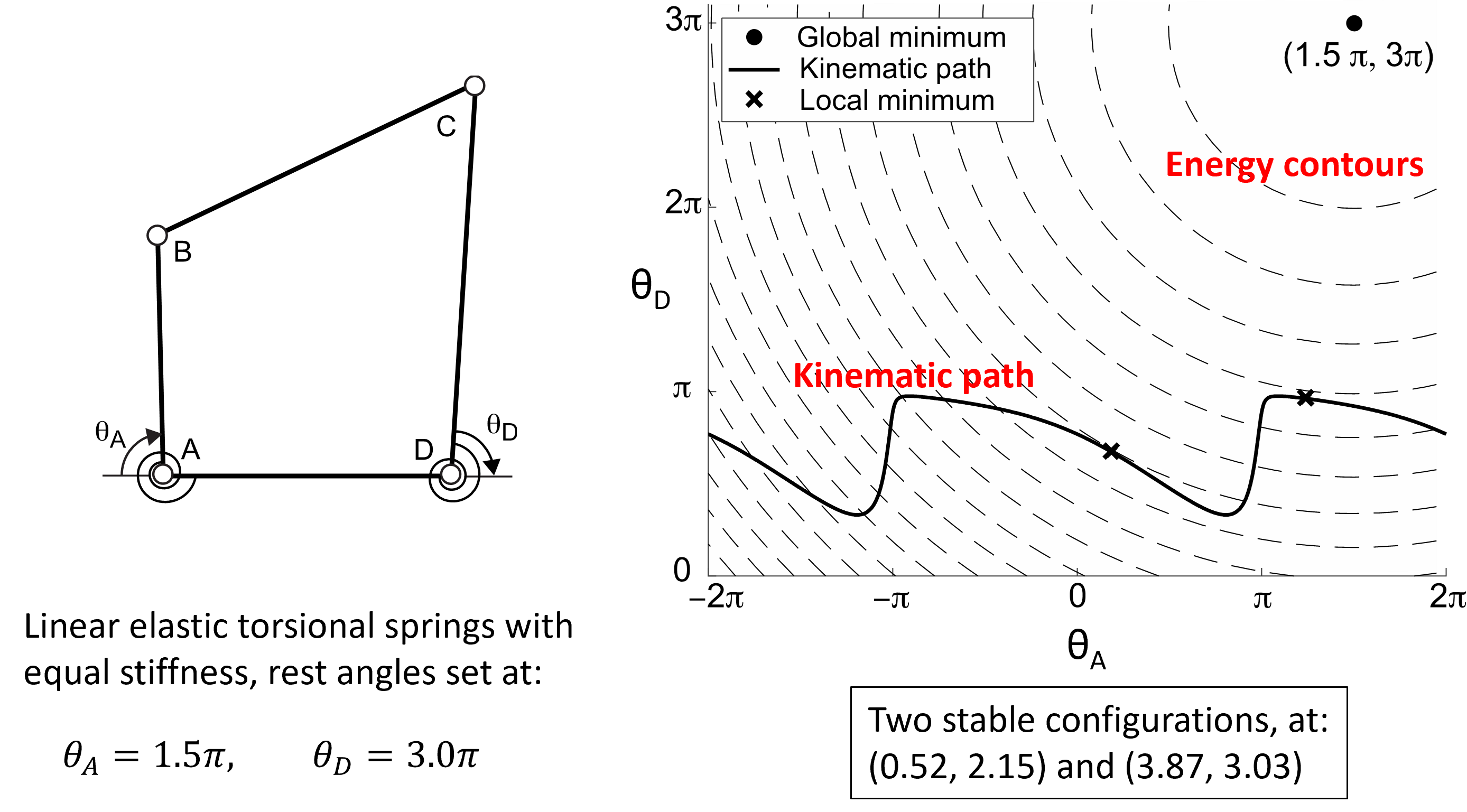
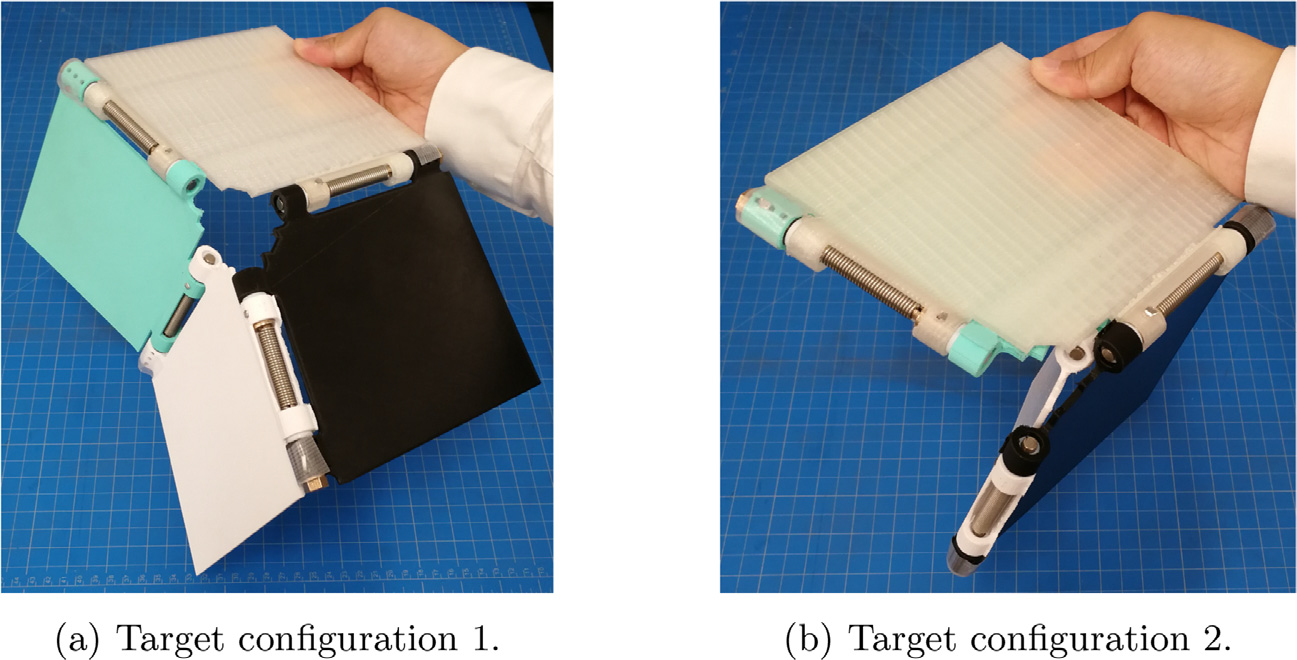
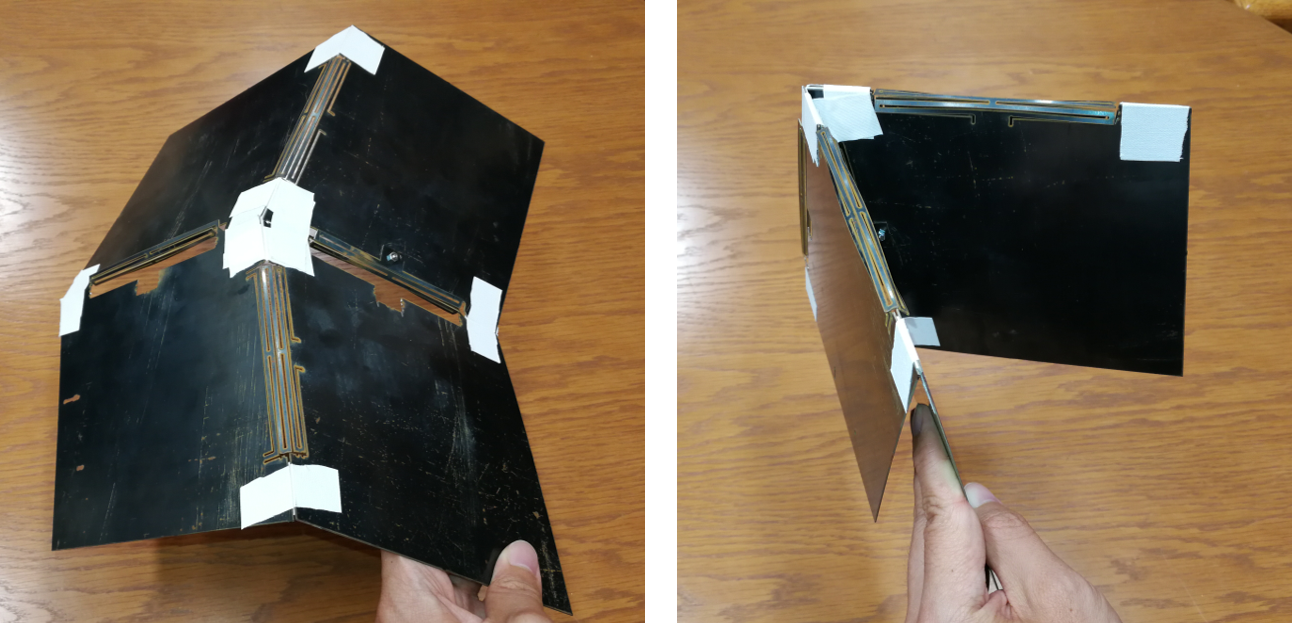
Reference papers:
Y. Li, S. Pellegrino*, A theory for the design of multi-stable morphing structures, Journal of the Mechanics and Physics of Solids (2020), https://doi.org/10.1016/j.jmps.2019.103772
Y. Li*, A method of designing a prescribed energy landscape for morphing structures, International Journal of Solids and Structures (2022), https://doi.org/10.1016/j.ijsolstr.2022.111500
Y. Li*, Motion paths finding for multi-degree-of-freedom mechanisms, International Journal of Mechanical Sciences (2020), https://doi.org/10.1016/j.ijmecsci.2020.105709
2. Type 2: assembly of bi-stable unit cells for multi-stable morphing surfaces
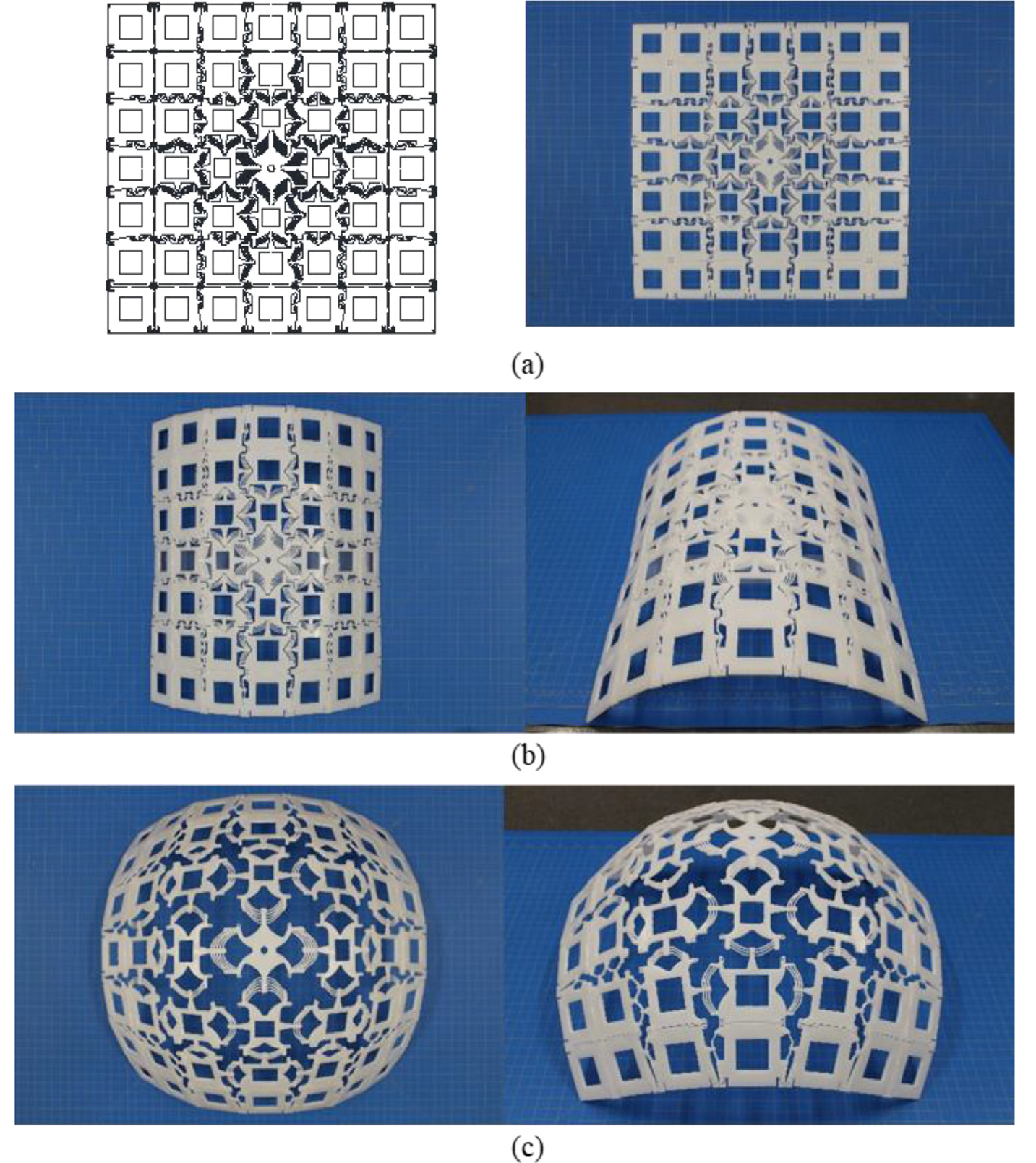
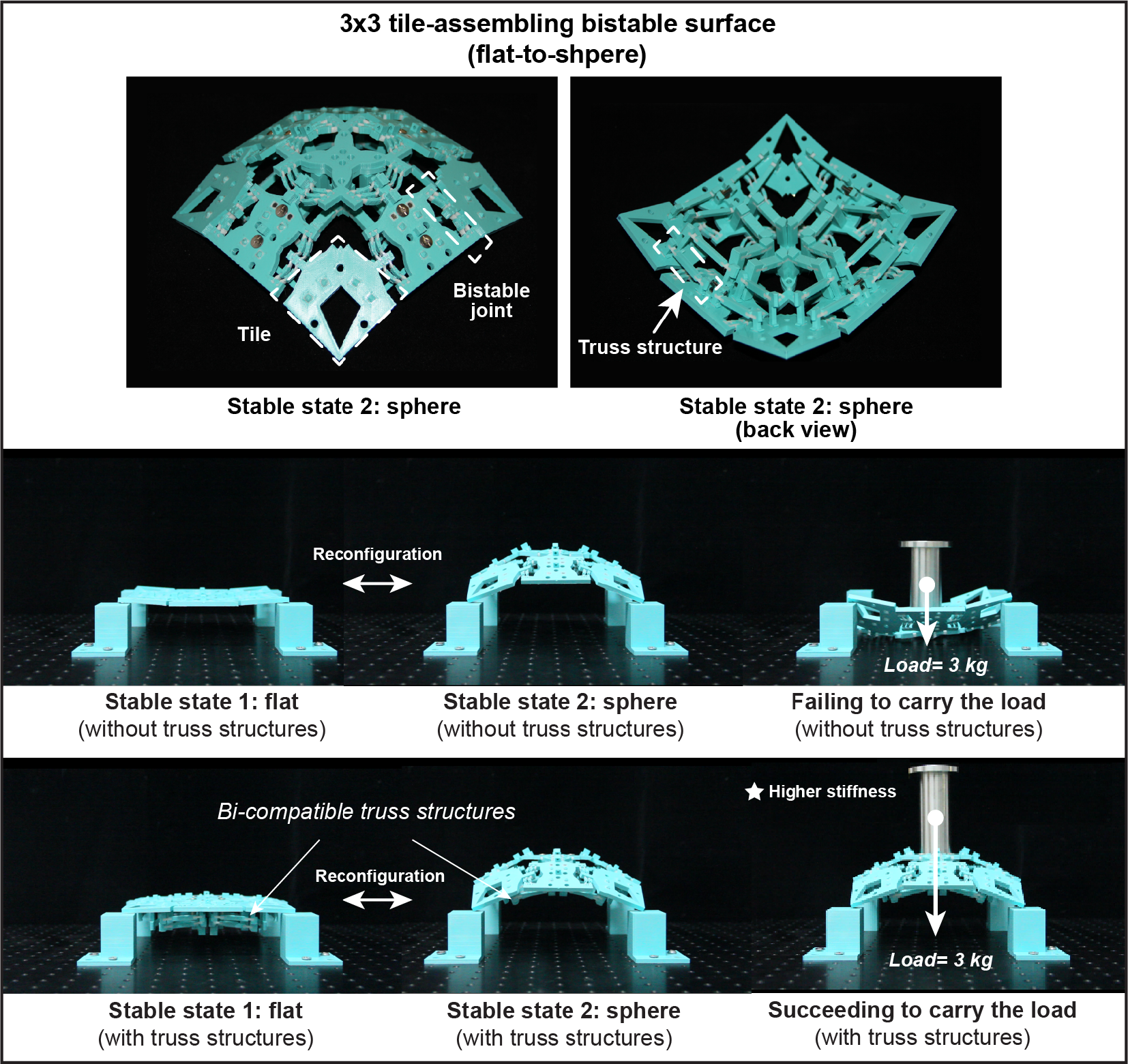
Reference papers:
Y. Li*, A. Chandra, C.J. Dorn, R.J. Lang, Reconfigurable surfaces employing linear-rotational and bistable-translational (LRBT) joints, International Journal of Solids and Structures (2020), https://doi.org/10.1016/j.ijsolstr.2020.09.029
P. Zhang#, T. Zhou#, K. Zhang, Y. Luo, Y. Li*, High-stiffness reconfigurable surfaces based on bistable element assembly and bi-compatible truss attachment, Extreme Mechanics Letters (2024), https://doi.org/10.1016/j.eml.2024.102187
3. Type 3: multi-compatible structures designed by optimization employing multi-compatibility constraints -> found various new multi-stable morphing structures!
(1) 2D multi-stable truss
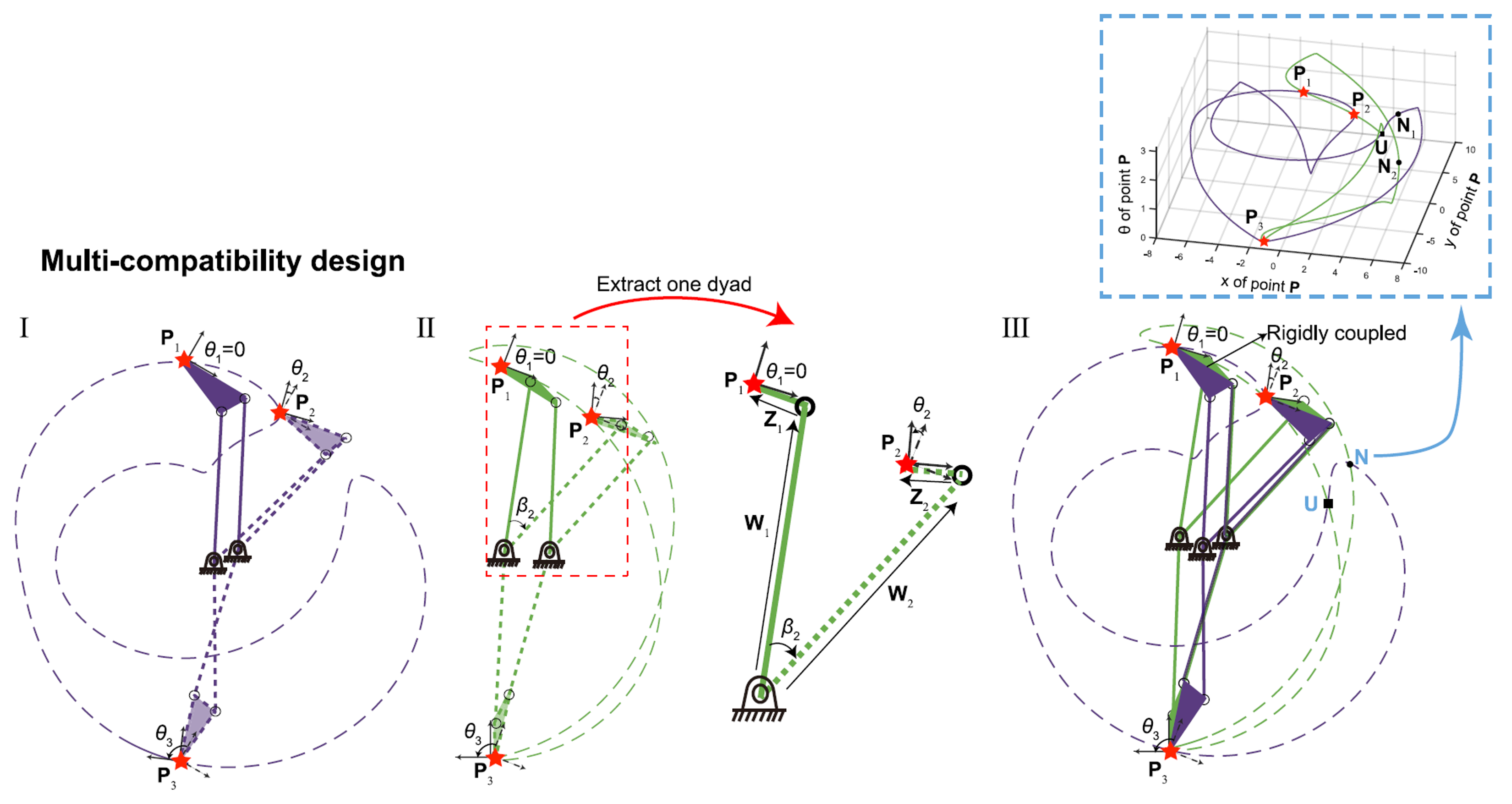
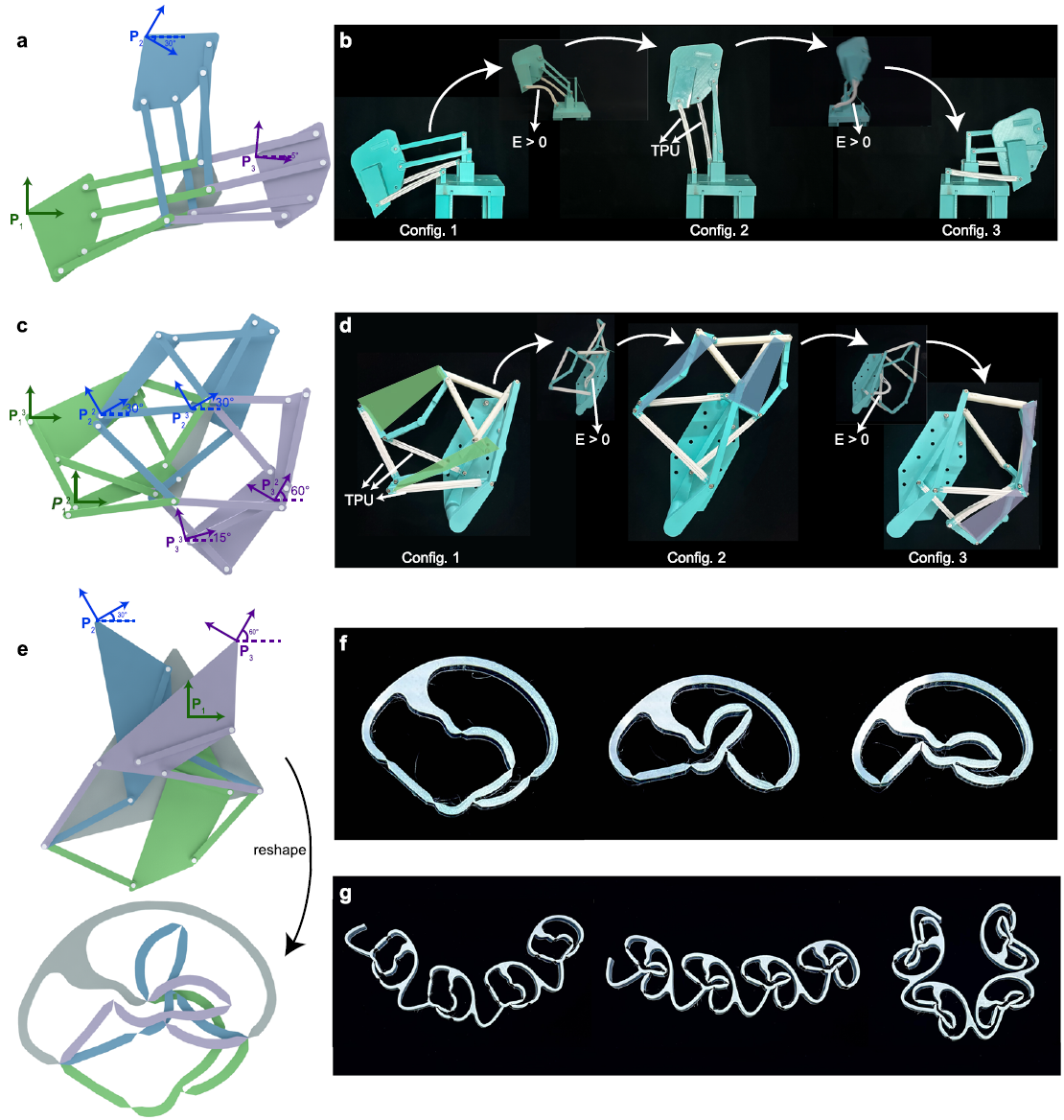
(2) 2D multi-stable linkage (removing one link from the above truss design) -> multiple 1-DOF kinematic paths separated by energy barriers
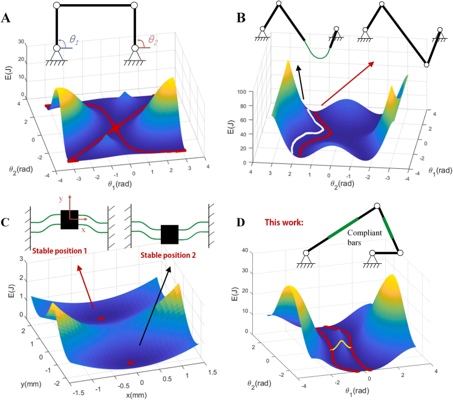
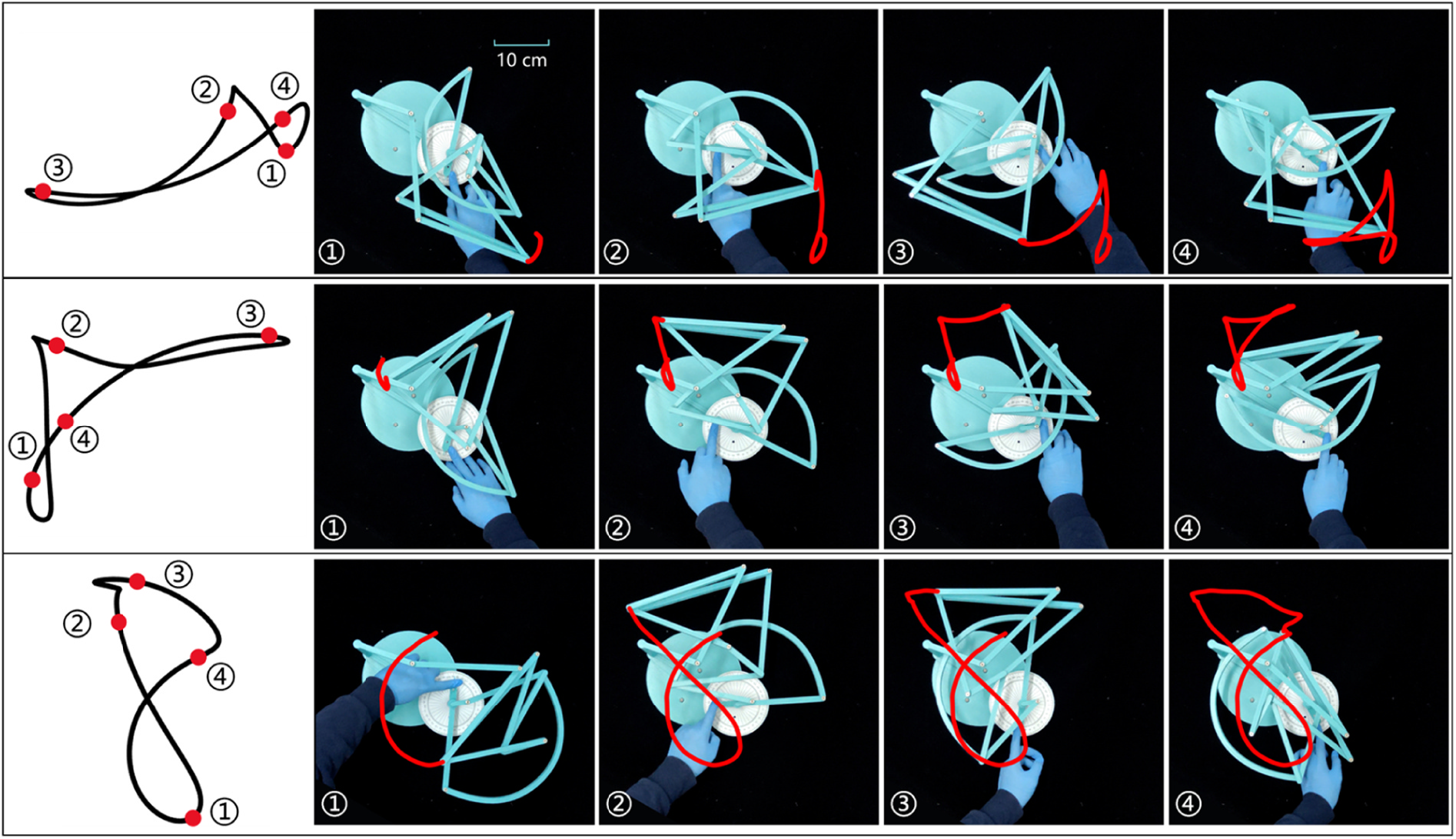
(3) 3D multi-stable structures

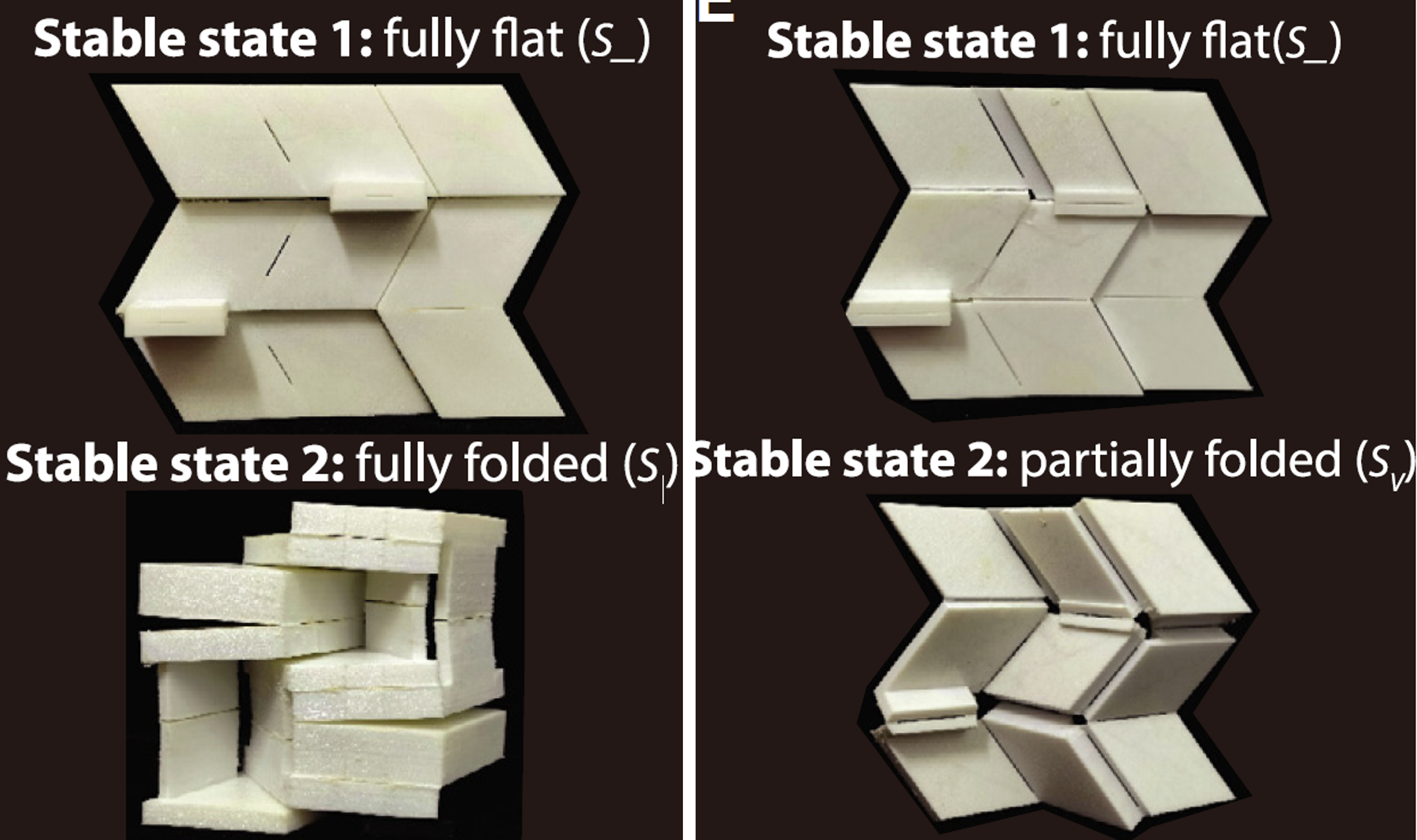

Reference papers:
L. Ai, S. Yin, W. He, P. Zhang, Y. Li*, Easy-to-actuate multi-compatible truss structures with prescribed reconfiguration, Nature Communications (2024), https://doi.org/10.1038/s41467-024-49210-3
Z. Lin#, L. Ai#, H. Feng, W. He, Y. Li*, Multistable compliant linkages with multiple kinematic paths separated by energy barriers, Extreme Mechanics Letters (2024), https://doi.org/10.1016/j.eml.2024.102175
T. Zhou, C. Huang, Z. Miao, Y. Li*, Intrinsically Multi-Stable Spatial Linkages. Advanced Science (2024), https://doi.org/10.1002/advs.202402127
Z. Miao#, H. Wang#, T. Zhou, K. Liu, H. Ye, Y. Li*, Multi-stable origami with thick panels, Cell Reports Physical Science (2025), https://doi.org/10.1016/j.xcrp.2025.102402
Wang, Heming#, Zhuangzhi Miao#, Jinghui Lv, Yujie Xie, Chong Huang, and Yang Li*. "Bi-stable boxed thick origami-inspired modular and load-carrying structures." Mechanism and Machine Theory 214 (2025): 106114. https://doi.org/10.1016/j.mechmachtheory.2025.106114